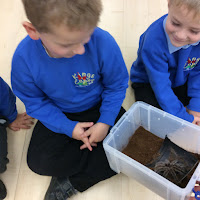In Year 4 we have been learning about keeping healthy. During our Science lessons we have been finding out about the digestive system and the ways nutrients are absorbed into our bloodstream. To help us understand this we investigated using a pair of tights and a tin of beans.
We poured the beans inside the tights to replicate food moving through the digestive system.
The beans stayed inside the tights, showing the waste products moving through the digestive system.
The tomato juice was squeezed out through the holes in the tights to show the nutrients being absorbed into the blood stream as the food makes its way through the digestive system.
We used some key words during the activity, such as:
oesophagus
large intestine
small intestine
stomach
Can you think of any more?
Why don't you have a go yourself?




























